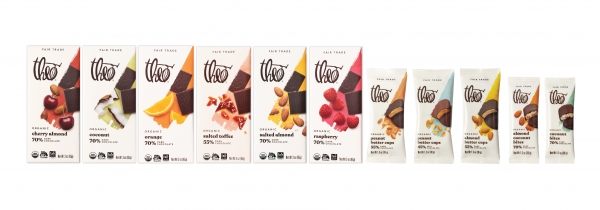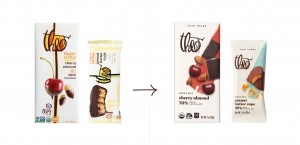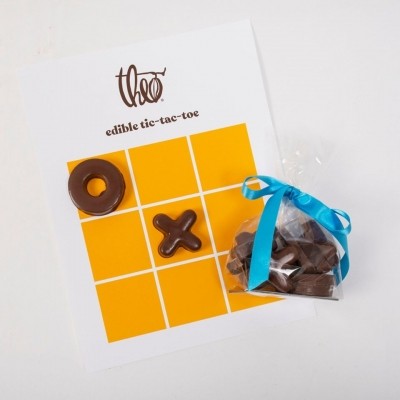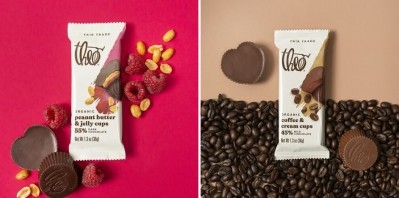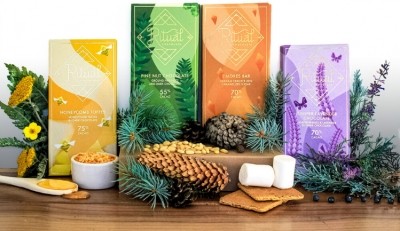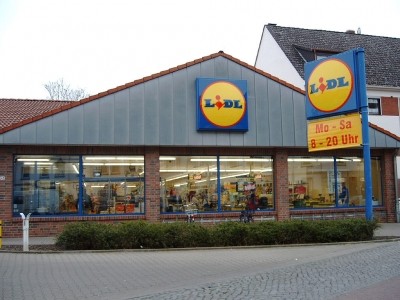Branding
Theo Chocolate goes back to its roots with brand refresh
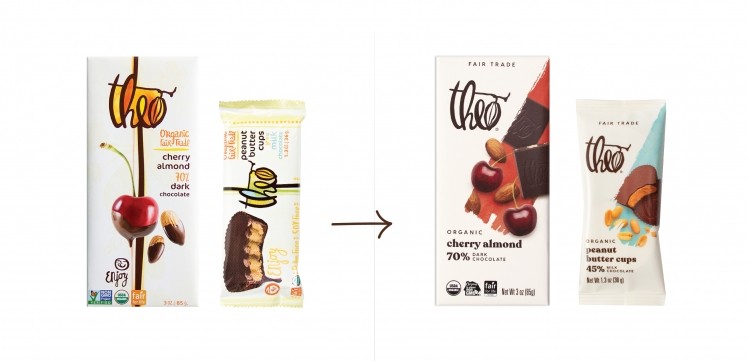
Theo Chocolate, launched more than 12 years ago as the first-to-market organic, Fairtrade and bean-to-bar maker, has unveiled a simplified and elegant redesign of its packaging to help guide consumers in what has become a crowded market.
“It was time to rejuvenate the brand,” CMO Jason Harty told ConfectioneryNews, speaking to us on the phone from the floor of Expo East. “It’s not revolutionary – it’s evolutionary.”
Theo’s original package featured the ingredients – say cherries and almonds – on top of a white background with a chocolate drip running down the middle. Behind the logo, colors signified the couverture and cacao percentage of the chocolate within, but Harty admitted that only ‘in-the-know’ consumers would have connected the dots.
On the refreshed package, the logo remains the same but skips the colors, moving them to a swash on the side. Each muted tone – a light green for the coconut dark chocolate, for instance, and a light pink for the dark salted toffee – shows off images of the ingredients.
“We spent a lot of time talking to consumers, online and off,” said Harty, in an effort to understand what loyal Theo buyers and those of premium chocolate in general wanted from packaging and messaging. The answer: ‘clear and apparent’ flavor indications.
“The off-white background really helps us [stand out] on the shelf. It’s a bit of a respite when you’re looking at the craziness of any set. In premium chocolate, there’s great graphic design and colors and imagery, and ours kind of draws your eye in.”
Theo maintains its brand ethos
The chocolate maker says it is re-establishing its ‘core purpose’: Its products have always been Fairtrade and certified organic by the USDA. On the new package, those certification symbols remain, but this time in black-and-white, versus the green of the USDA organic symbol and green and orange of the Fairtrade icon.
“For us, it’s important to hold up our values, but that isn’t the whole of our story. The brand, who we are and what it tastes like are all very important. So is being USDA organic and Fairtrade, but those aren’t the pillars of our brand story,” said Harty. “The brand is not built on its certifications; it’s built on the backs of the founders, [on] sourcing our ingredients ethically, and making our products with a lot of pride and passion.”
In addition to cultivating direct relationships with its cacao farmers, Theo is a true bean-to-bar producer. “We make the chocolate ourselves – the hard way – and not many others do it that way, especially brands our size.”
Notably, the updated pack omits the GMO Project Verification symbol because, explained Harty, USDA organic products are inherently non-GMO. In its stead, Theo added an icon licensed from the dairy company Organic Valley that reads, “Organic is always non-GMO.”
The company hopes to use it as ‘a teaching moment’ to help consumers understand what organic really means. “Hopefully some day in the future, when consumer knowledge catches up, we can remove that,” continued Harty, acknowledging that despite increased interest in the origin of their food, “it’s not a straight line.”
Positive impact
Theo Chocolate was launched on the premise that a positive impact can be made through chocolate. From the get-go, the brand committed to source fair trade and organic ingredients that not only support farmers, but also benefits consumers and the planet.
The company claims that every Theo Chocolate purchase directly supports the livelihood of 6,500 cocoa farmers and their 35,000 family members each year, enabling them to send their children to school and reinvest in their communities.
Theo diversifying along with the premium chocolate category
Harty said the time was nigh to refresh the brand as the category has blossomed since Theo launched 12 years ago.
“We love this growth, but the chocolate aisle can be overwhelming for consumers with competing narratives, an abundance of certifications and a lack of flavor appeal. That’s not how chocolate lovers should experience chocolate. It should be simple and inspiring.”
Because chocolate is by and large an impulse purchase, he told us, “both standing apart and breaking through the clutter of the category – as well as earning the trust and deep affinity from consumers – is paramount. We hope that we’ll start doing a better job of that with this new package.”
Theo Chocolate chose New York-based branding agency clarkmcdowall in part for their impressive breadth of work with some of the world’s biggest CPG companies – Frito-Lay, Hershey, Mars Wrigley – to small brands in the natural and organic space, such as Boulder Canyon. The team also immediately understood the brand’s original ethos, Harty told us: “They got us from day one…with a real, genuine understanding of whom we aimed to be in the beginning and whom we aim to be in the future.”
Paul McDowall, a partner at the agency, echoed that sentiment.
“Working with a brand that has a true purpose, makes their product with genuine integrity, and is committed to growing their business responsibly always presents an exciting opportunity for us. Theo Chocolate has a rich story and set of values that wasn’t translating on a consumer level,” he said in a release.
New Theo products for a new era of fine chocolate
The refreshed packaging will hit US shelves starting this month along with a new Coffee Toffee 70% Dark Chocolate bar, including in select Kroger banners. Additionally, Theo just landed a NEXTY award at Expo East in Baltimore, September 11-13, for its peanut butter and jelly cup – set to land in retail in early 2020.
Theo has also created a peppermint cocoa cup and a coffee toffee version, products that Harty sees as an integral part to the future of his brand and of the broader premium chocolate category.
“Consumers are looking for alternative formats and new flavors and familiar favorites that may have been cleaned up with better ingredients,” he said, noting the possibilities with ganaches, petite confections, chocolate-covered nuts – “the list goes on.”
Bars are undoubtedly an ‘important foundation,’ but new formats, pack sizes and flavor explorations will propel the sector into a sustainable, flavorful future.
